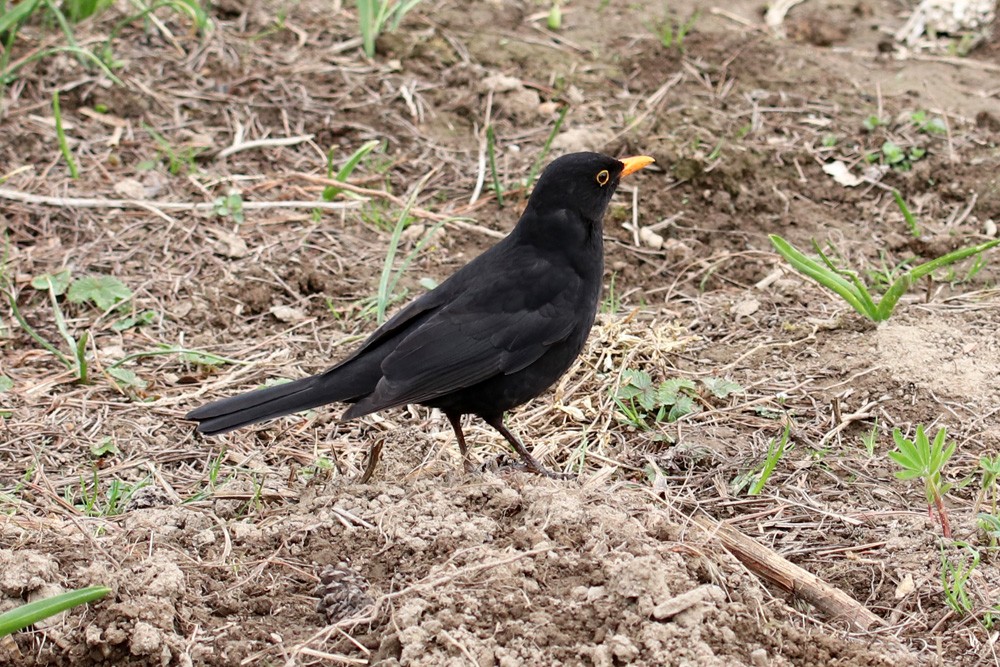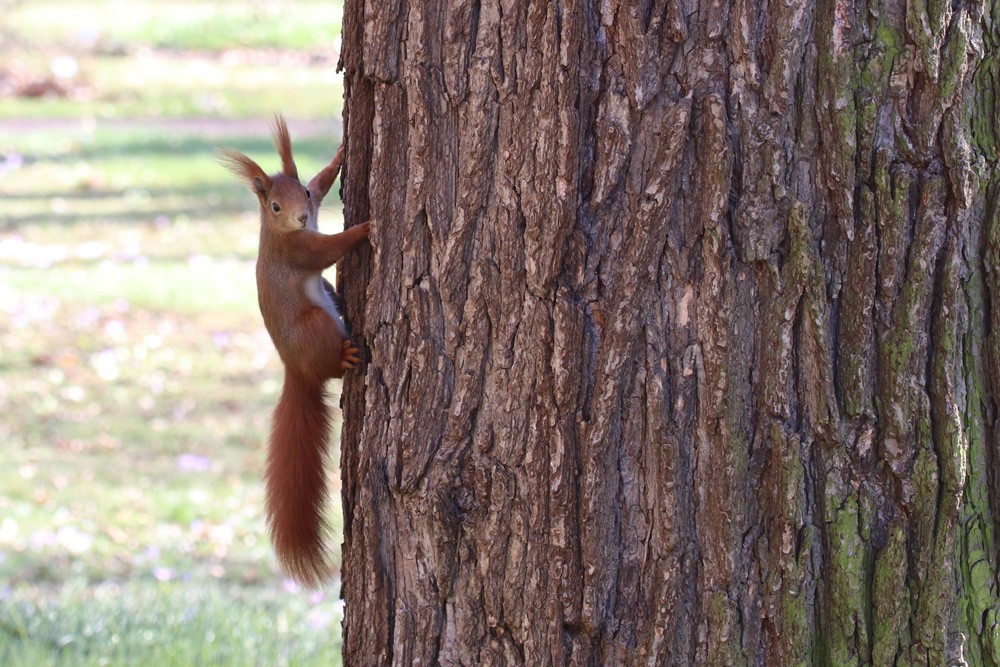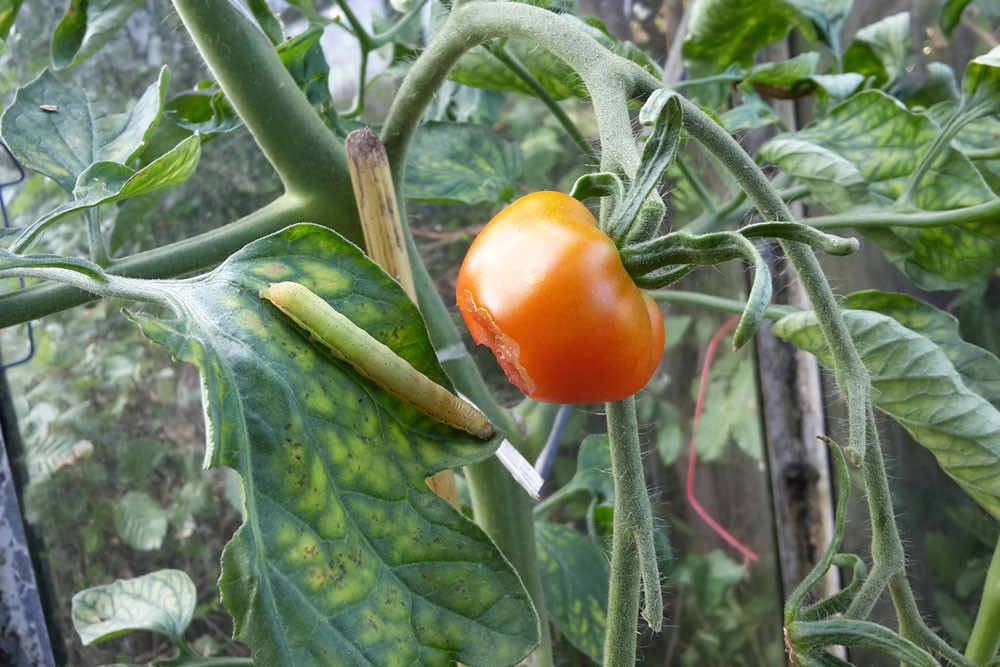Tomatoes cultivated in the open often invite unauthorized self-service. Because not only people, but also numerous animal gourmets enjoy the red fruits. We tell you which animals particularly like to nibble on the tomatoes and how they can be kept away in the most natural way possible.
Snails
Slugs and snails like to attack a wide variety of garden plants, including tomatoes. Weakened young plants are particularly affected, but slugs do not stop at the fruit either. They love to eat them and even hollow them out. However, snails are at the same time very useful, because their secretion is good for soil life. To keep the pests away from the tomatoes, but not harm them, amateur gardeners can proceed as follows:
- Keep the bed free of undergrowth
- Do not fertilize tomatoes too much
- collect them in the morning and put them somewhere else
- scatter crushed egg shells
Note: Excessive fertilizing will soften tomato leaves and at the same time make them easier for slugs to digest.
Birds

Birds have proven to be extremely useful in pest control, because they eat many insects. However, the feathered often tamper with garden plants themselves and nibble on tomatoes. Often birds are simply thirsty and try to quench their thirst through the water-containing fruits. Nevertheless, it is obviously undesirable for them to nibble on tomatoes, so it is best to keep them away from tomatoes as follows:
- Lay out a bowl of water between perennials
- Put up vegetable protection net
Raccoons
Raccoons are increasingly entering populated areas and making their way into local gardens. They are often attracted by compost and treats in garbage cans, so they take up residence in gardens and barns. Although raccoons look quite cute, they are wild and especially aggressive predators. In addition, they carry a number of diseases, such as rabies and distemper, as well as parasites. If you want to protect yourself and your pets, but also your tomatoes, you should make your garden as unattractive as possible for raccoons:
- Cover compost
- Clean and empty garbage cans regularly
- Seal garbage cans
- Double wrap food to contain odor
- Do not feed raccoons!
Note: It is illegal to use lethal traps against raccoons. Likewise, it is not legal to trap them alive and release them in another location.
Squirrels

Squirrels are active during the day and prefer to eat roots and seeds and nuts. However, the small rodents also appreciate tomatoes and like to nibble on them. The squirrels usually nibble on only one side of the tomato, leaving a medium to large hole in the fruit. To keep the small rodents away from tomato plants, the following tools have proven effective:
- Wind chimes
- Pinwheels
- Place a bowl with water on the other side of the garden
Note: Squirrels are diurnal and accordingly nibble on the fruit during the day. However, if the feeding marks on tomatoes have occurred at night, other intruders have had a good time.
Woodlice
Woodlice are also known as “woodlice” and are widespread. A typical feature of these little animals, which are around two centimeters long, is that they curl up when danger threatens. In the garden, the crustaceans have proven to be extremely useful, because they feed on dead plant remains and thus support the valuable formation of humus. However, if there is not enough dead plant material available, they also like to feast on fresh shoots and leaves. If the crustaceans appear in masses and damage the tomato plants, the plants can be protected as follows:
Set up artificial shelters – e.g.: Put flower pots, moistened wood wool & bait in them.
e.g.: hollowed out potatoes, halved carrots – collect woodlice the following day and carry them away.
Note: Woodlice have a variety of natural enemies including hedgehogs, toads, tree frogs and various bird species.
Caterpillars and moths

Butterflies and moths are particularly common in the garden and, in principle, do not bother. However, their caterpillars make a mess of many garden plants and also like to nibble on tomato fruit. In particular, the caterpillars of the vegetable owl often leave feeding traces on tomatoes, whereby this is mostly the case in greenhouses. There, the caterpillars can be controlled quite effectively with pheromone traps. In the garden or outdoors, however, the scent traps are not recommended, as they would only attract more moths. However, there are proven control methods for the garden as well:
- Collect caterpillars early in the morning
- use natural predators
- e.g.: predatory bug (Macrolophus pygmaeus)
- tightly meshed insect net around the bed
Mice
Home and garden owners very often encounter mice, and here a basic distinction is made between three different species. House mice mainly nest inside buildings, while shrews and voles are preferably found in the garden. For the vegetable patch, however, it is mainly voles that pose a danger, as the rodents love to burrow through the soil and gnaw at the plant roots. However, they also do not stop at fruits and sometimes even eat tomatoes. However, the unwanted rodents can be kept away from tomato plants with strong-smelling substances:
- Elderberry
- Cypress
- Garlic
- Herbal oils
- Twigs of thujas
Note: Voles have numerous natural enemies, such as foxes, martens, owls and weasels.


